Bears are iconic creatures that captivate our imagination with their strength, beauty, and adaptability. While some bear species are well-known and widely recognized, others dwell in obscurity, existing on the fringes of our awareness. Here, we delve into the realm of the rarest bear species, shedding light on these fascinating and often elusive animals.
Giant Panda (Ailuropoda melanoleuca)

The Giant Panda, an iconic symbol of wildlife conservation, is native to the mountainous regions of central China. Known for their distinctive black and white fur, these bears primarily feed on bamboo. Due to extensive conservation efforts, including habitat preservation and anti-poaching laws, the Giant Panda’s status has improved from Endangered to Vulnerable. The latest estimates suggest that there are over 1,800 pandas living in the wild and in captivity, reflecting a hopeful trend for the future of this beloved species, once on the brink of extinction.
Sun Bear (Helarctos malayanus)
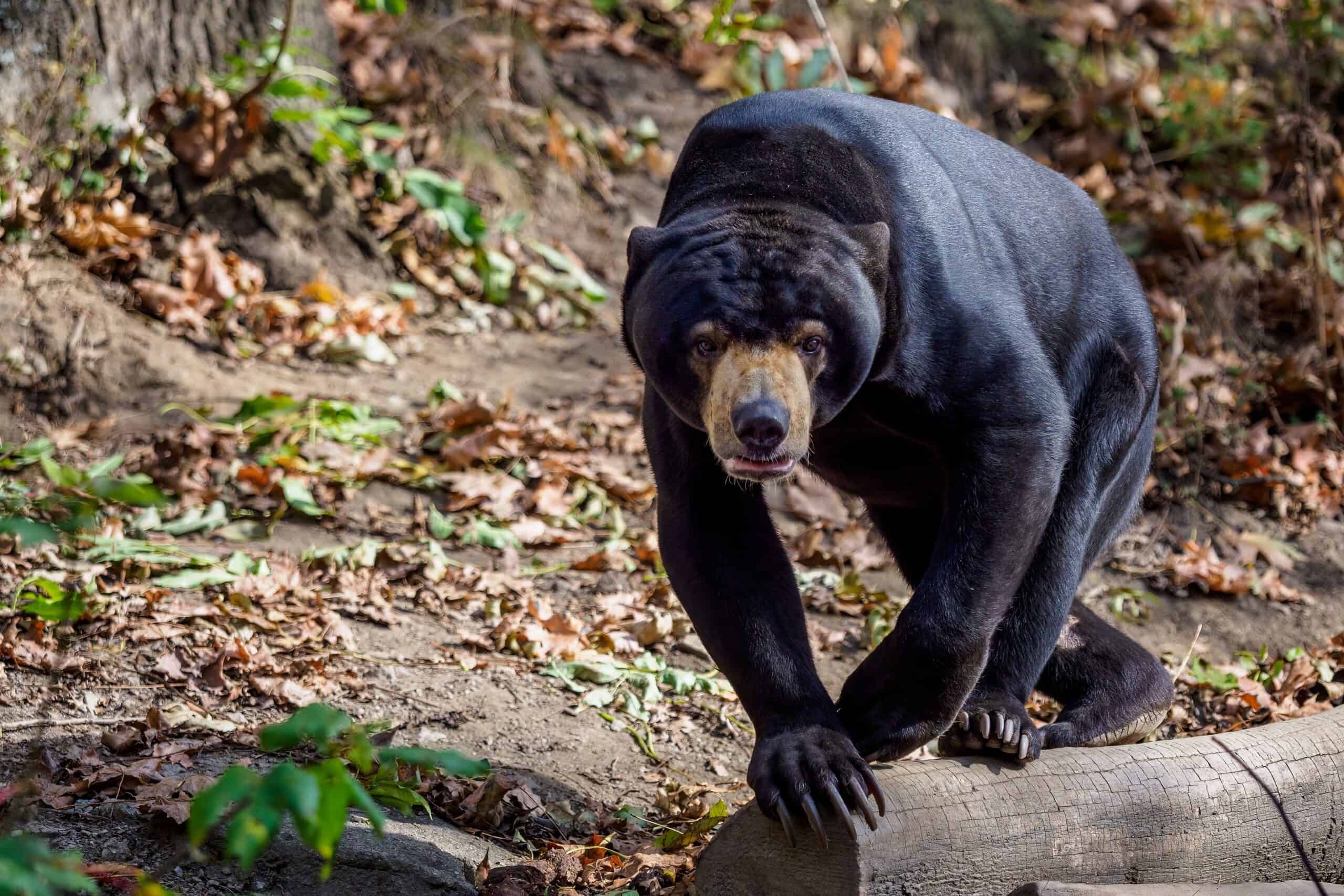
The Sun Bear, often distinguished by its small size and characteristic chest patch, is the smallest member of the bear family. Native to the tropical forests of Southeast Asia, these bears face significant threats from habitat destruction and poaching for their bile and body parts, used in traditional medicines. Although exact population numbers are hard to determine due to their secretive nature and dense habitats, the species is classified as Vulnerable by the IUCN. Conservation efforts are critical to preventing their decline and ensuring the survival of these unique bears.
Spectacled Bear (Tremarctos ornatus)

The Spectacled Bear, named for the distinctive markings that often resemble eyeglasses on its face, is the only bear species native to South America. Residing primarily in the Andean mountain forests, these bears are increasingly threatened by habitat fragmentation and loss due to agricultural expansion. Classified as Vulnerable by the IUCN, the spectacled bear’s total population is estimated to be fewer than 10,000 mature individuals. Effective conservation measures are essential to preserve this unique species, whose survival is integral to the biodiversity of the Andean region.
Polar Bear (Ursus maritimus)
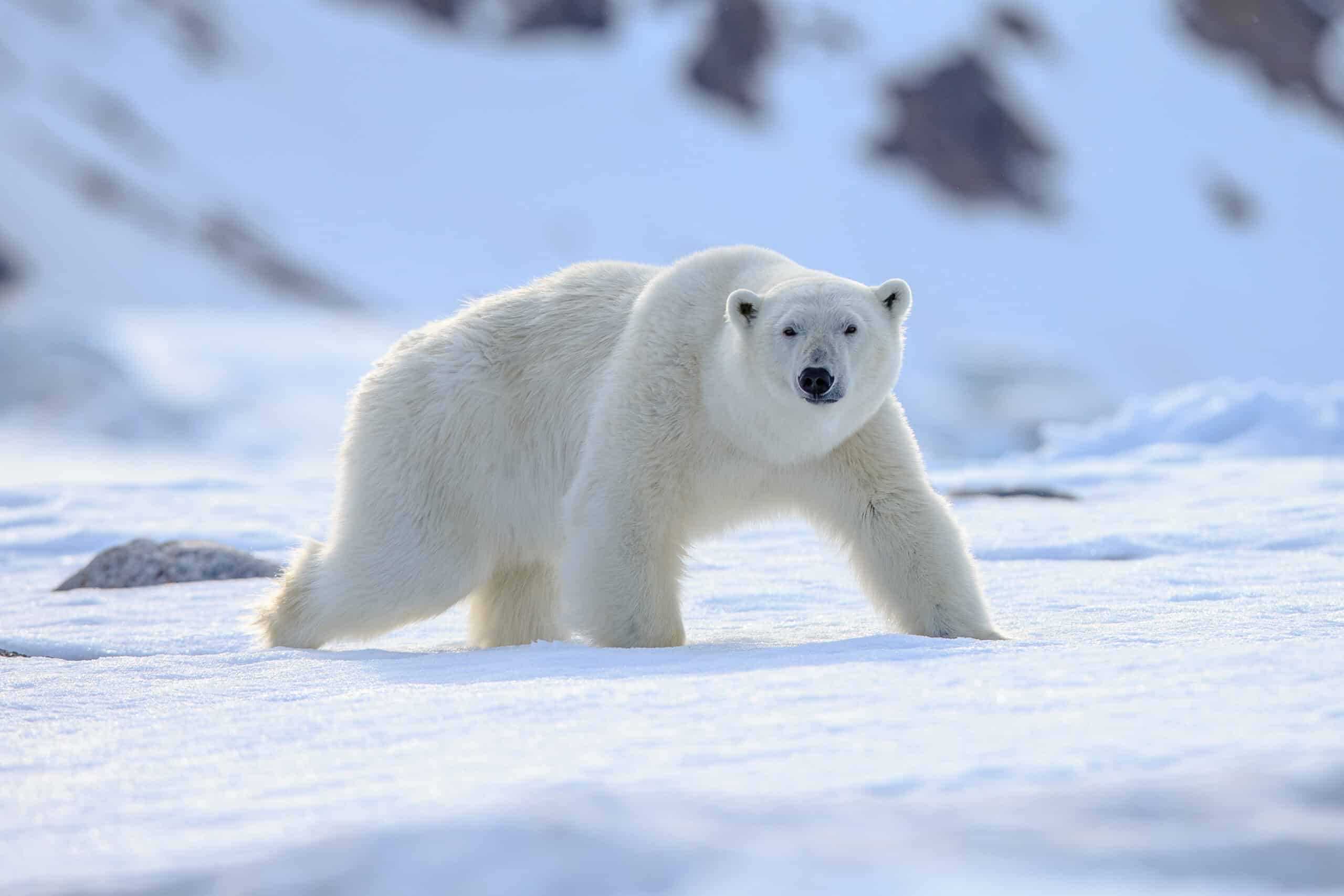
The Polar Bear, the largest terrestrial carnivore, is native to the Arctic Circle, encompassing the Arctic Ocean and its surrounding seas and landmasses. Characterized by their white fur, which provides camouflage in their snowy environment, polar bears are primarily dependent on sea ice for hunting seals, their main food source. Climate change poses the most significant threat to polar bears, leading to the loss of their sea ice habitat. Currently listed as Vulnerable by the IUCN, the global population of polar bears is estimated to be between 22,000 to 31,000 individuals, but this number is expected to decline as sea ice continues to diminish.
Sloth Bear (Melursus ursinus)

The Sloth Bear (Melursus ursinus), native to the Indian subcontinent, is uniquely adapted to a diet primarily consisting of insects, particularly termites and ants. Recognizable by its shaggy black coat and long, curved claws, this nocturnal bear uses its specialized snout to blow away dirt and access its prey. Currently classified as Vulnerable by the IUCN, the sloth bear faces threats from habitat loss due to deforestation and human encroachment, as well as poaching for body parts used in traditional medicine. Population estimates suggest fewer than 20,000 sloth bears remain in the wild, underscoring the urgent need for effective conservation strategies to ensure their survival.
Formosan Black Bear (Ursus thibetanus formosanus)
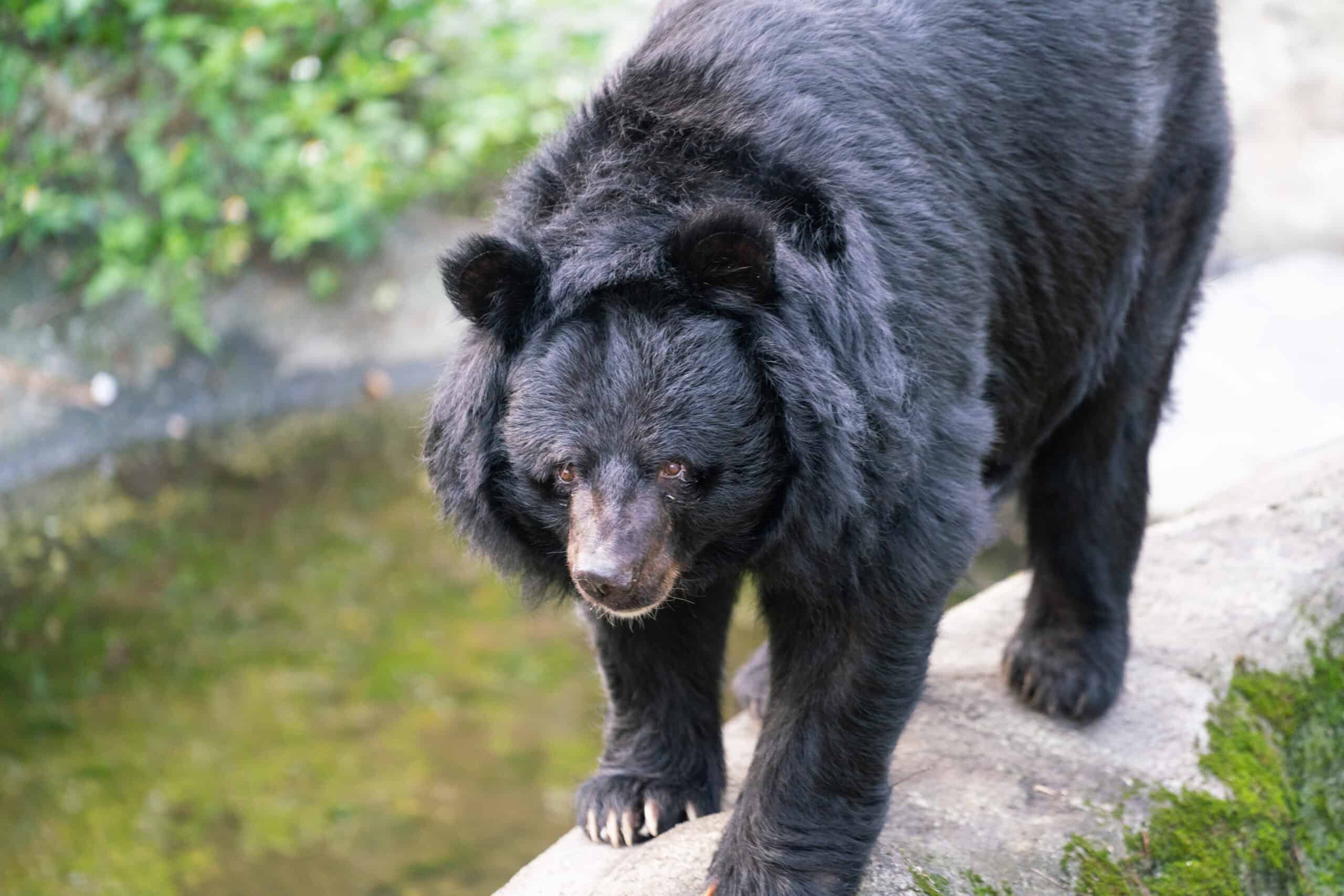
The Formosan Black Bear (Ursus thibetanus formosanus), also known as the Taiwanese Black Bear, is a subspecies of the Asian Black Bear, found exclusively in Taiwan. Distinguished by a prominent white “V” on its chest, this bear resides mainly in the mountainous forests of the island. Facing critical threats from habitat destruction and illegal hunting, the Formosan Black Bear is classified as endangered on Taiwan’s Red List of Threatened Species. While comprehensive population studies are limited, estimates suggest that only a few hundred individuals remain, making it one of the rarest and most endangered bear species in the world. Conservation efforts are vital to protect this unique subspecies from further decline.
Malayan Sun Bear (Helarctos malayanus euryspilus)

The Malayan Sun Bear (Helarctos malayanus), the smallest species in the bear family, is native to the tropical forests of Southeast Asia. Characterized by its sleek black coat and a distinct orange to cream-colored chest patch, this bear is also known as the “honey bear” for its fondness for honey. The Malayan Sun Bear is classified as Vulnerable by the IUCN due to significant threats from habitat loss and poaching for the illegal wildlife trade. Precise population numbers are challenging to determine, but it is estimated that fewer than 10,000 mature individuals remain in the wild. These bears are increasingly reliant on conservation programs to safeguard their dwindling habitats and ensure their survival.
Japanese Black Bear (Ursus thibetanus japonicus)
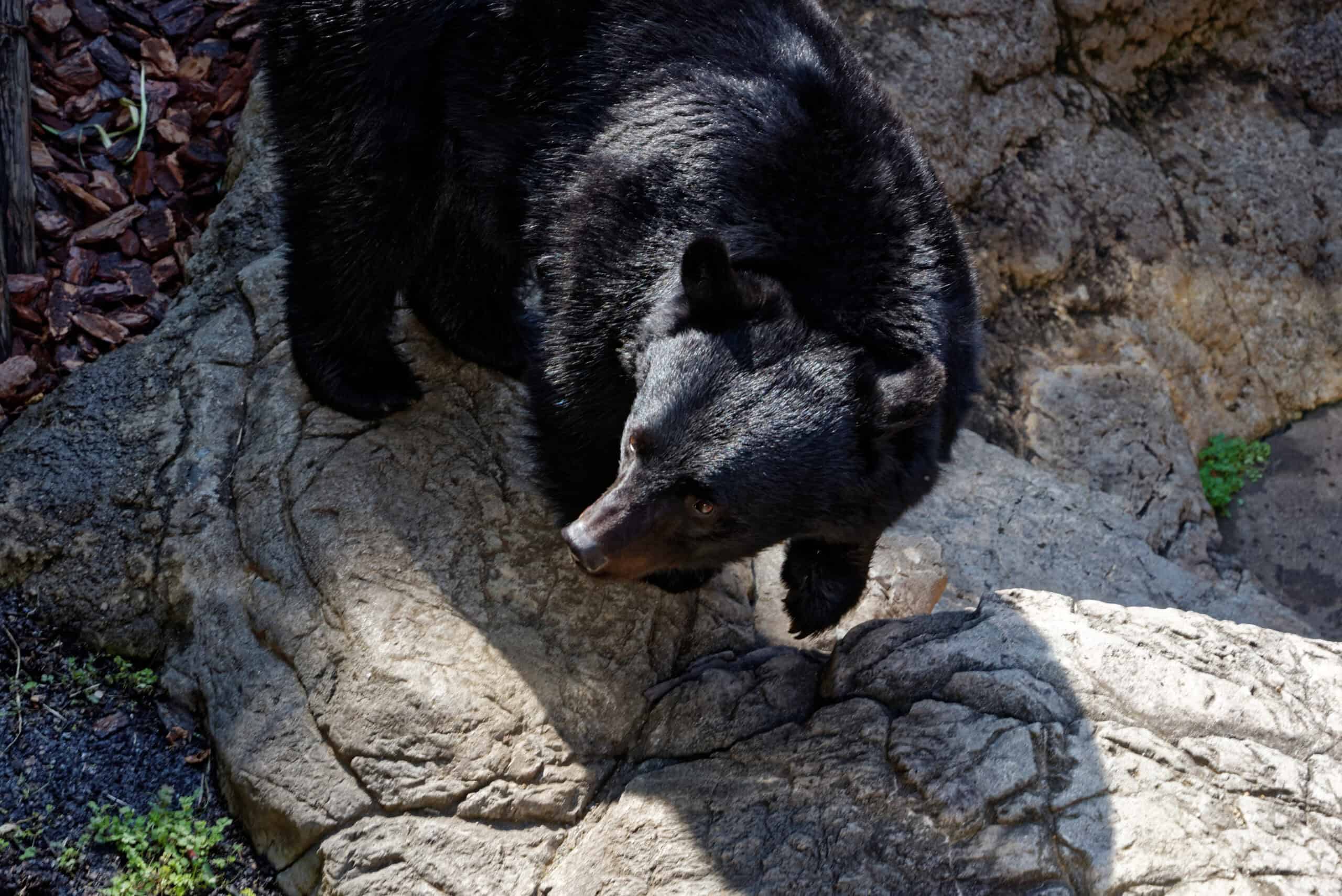
The Japanese Black Bear (Ursus thibetanus japonicus) is a subspecies of the Asian Black Bear, found predominantly in the forested mountain regions of Japan’s main islands, Honshu and Shikoku. These bears are easily recognized by the distinctive white crescent mark on their chest. They are considered vulnerable due to their limited and fragmented habitat, which leads to frequent conflicts with humans, especially in rural and agricultural areas. Population estimates are uncertain, but it is believed that fewer than 15,000 Japanese Black Bears remain. Conservation efforts are crucial to manage human-bear conflicts and to protect their natural habitats from further encroachment.
Kodiak Bear (Ursus arctos middendorffi)

The Kodiak Bear (Ursus arctos middendorffi), a subspecies of the brown bear, resides almost exclusively on the Kodiak Archipelago in Alaska. Known for being one of the largest bears, adult males can weigh up to 1,500 pounds. Despite their size and isolated habitat, Kodiak bears have maintained a stable population thanks to rigorous wildlife management and minimal human encroachment. The current population is estimated to be around 3,500 individuals. This number is relatively healthy, given the geographical constraints of their environment, and the Kodiak bear is not considered endangered. Their continued survival is largely attributed to the successful implementation of sustainable hunting regulations and conservation practices.
Asiatic Black Bear (Ursus thibetanus)
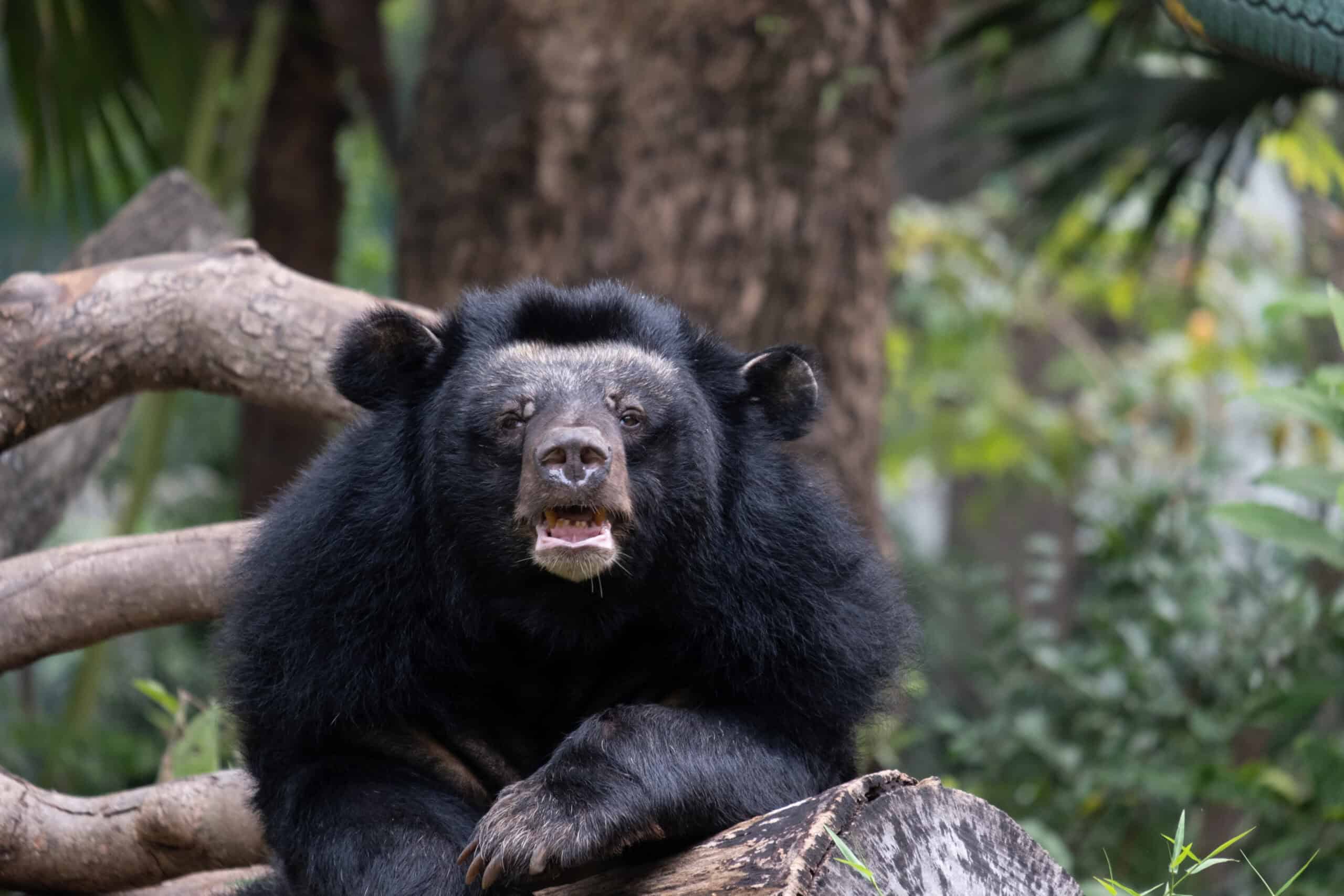
The Asian Black Bear, also known as the moon bear for the distinctive white crescent on its chest, inhabits forested areas across Asia, from Iran to Japan. This species faces severe threats from habitat loss, poaching for bile and other body parts used in traditional medicine, and human-wildlife conflicts. Classified as Vulnerable by the IUCN, the Asian Black Bear’s population is difficult to estimate accurately due to their wide range and secretive nature, but it is believed to be decreasing, with fragmented populations across their range. Conservation efforts are essential to protect these bears and their habitats, ensuring they continue to be a part of Asia’s natural heritage.
Bornean Sun Bear (Helarctos malayanus euryspilus)

The Bornean Sun Bear (Helarctos malayanus euryspilus), a subspecies of the Malayan Sun Bear, is endemic to the island of Borneo. This smallest of all bears is characterized by its sleek black coat and distinctive cream-colored chest patch. The Bornean Sun Bear faces severe threats from deforestation and commercial poaching for the pet trade and traditional medicine markets. Current population estimates are vague due to the dense habitats they occupy and their elusive nature, but the species is widely considered to be decreasing and is classified as Vulnerable. Conservation efforts are crucial to protect these bears from habitat loss and illegal hunting, emphasizing the need for strong enforcement of wildlife protection laws and community engagement in conservation strategies.
Syrian Brown Bear (Ursus arctos syriacus)

The Syrian Brown Bear (Ursus arctos syriacus) is one of the smaller subspecies of the brown bear, distinguished by its light brown fur and often smaller size. Historically roaming across the Middle East, from Turkey to Iran, this bear’s current range has dramatically shrunk due to extensive habitat loss and hunting. The Syrian Brown Bear is now considered critically endangered in some of its range areas, particularly in Syria and Lebanon, where only a few isolated individuals are thought to remain. Population estimates are exceedingly difficult to confirm given the ongoing regional conflicts, but the total number is believed to be very low, underscoring an urgent need for international conservation attention and efforts to ensure the subspecies’ survival.
Ussuri Brown Bear (Ursus arctos lasiotus)
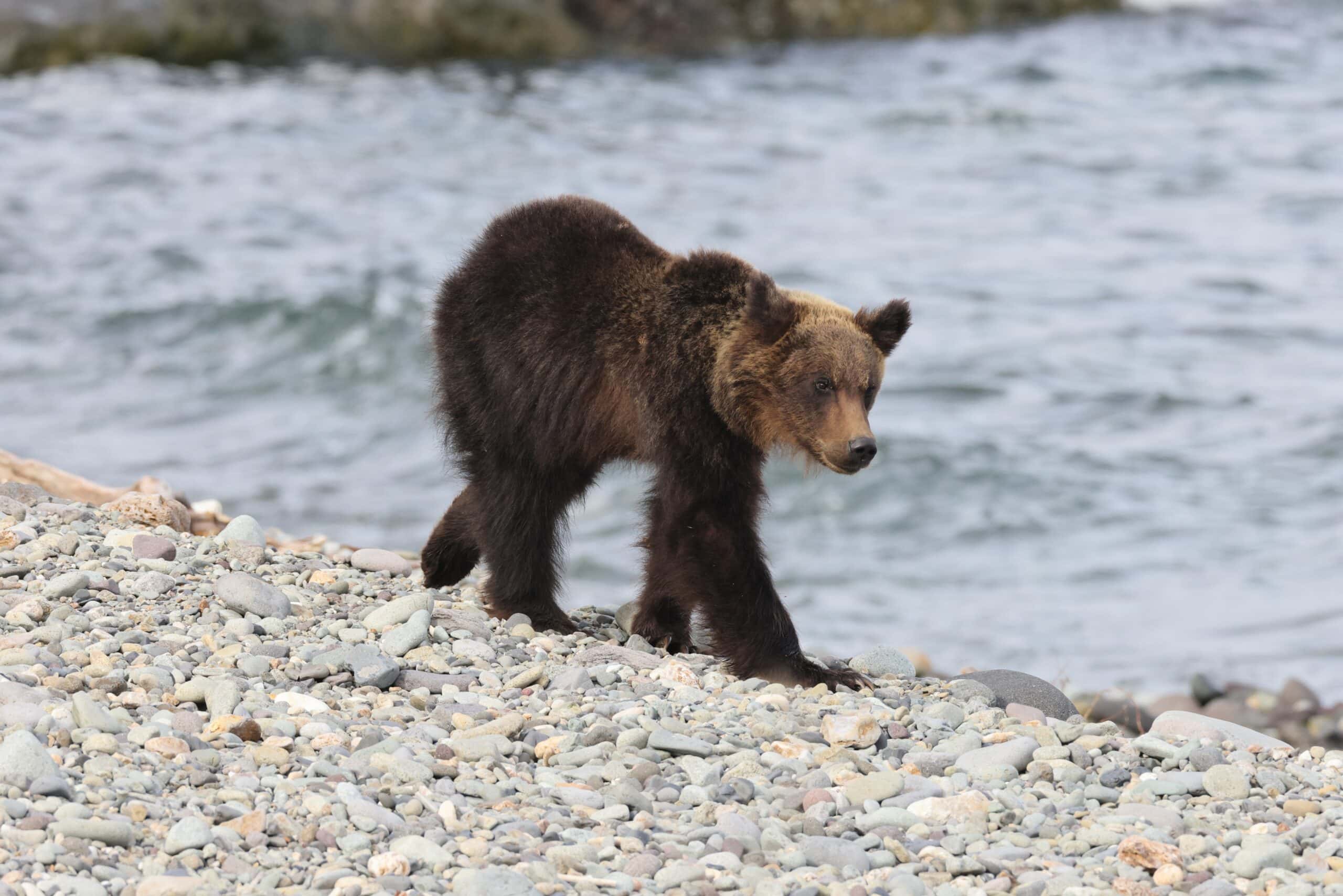
The Ussuri Brown Bear (Ursus arctos lasiotus), also known as the Black Grizzly or Amur Brown Bear, inhabits the forests of the Amur River region in eastern Russia and parts of northeastern China. This subspecies is notably large, with some males weighing over 600 kilograms (1,300 lbs). Despite their imposing size, these bears face significant threats from habitat loss and illegal hunting, primarily for their gall bladders and paws, which are valued in traditional medicine markets. While comprehensive population estimates are challenging to obtain, the Ussuri Brown Bear is classified as a species of concern, particularly in China where its numbers are lower. Conservation efforts are crucial to mitigate human-wildlife conflicts and preserve their natural habitats, ensuring the survival of this imposing bear species.
Himalayan Brown Bear (Ursus arctos isabellinus)
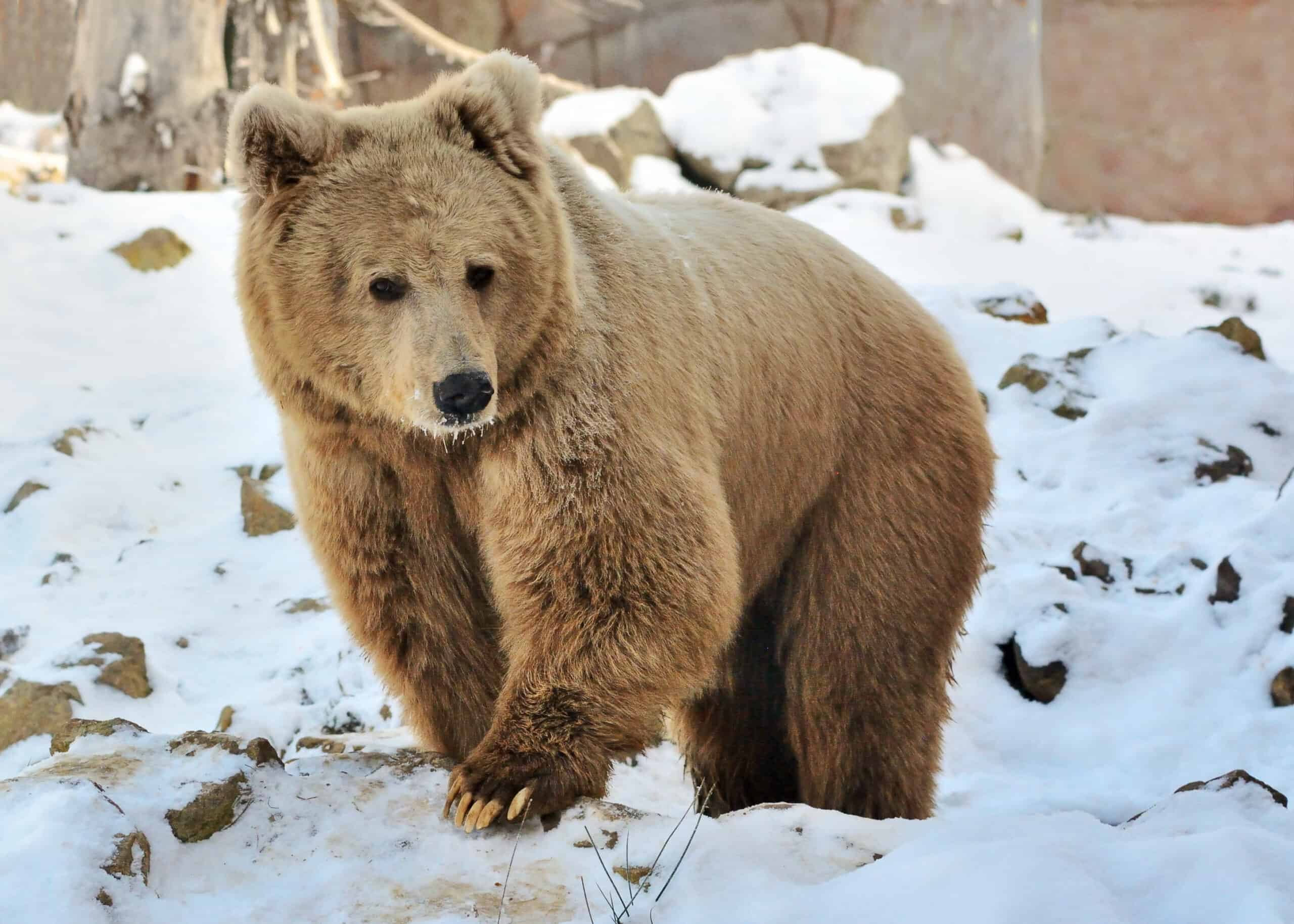
The Himalayan Brown Bear (Ursus arctos isabellinus), also known as the Himalayan Red Bear, is one of the most endangered bear subspecies, found primarily in the Himalayan regions of India, Pakistan, Nepal, Tibet, and Bhutan. This bear is distinguished by its reddish-brown fur and relatively smaller size compared to other brown bears. Due to extensive habitat loss, poaching, and human encroachment, the Himalayan Brown Bear is facing a critical survival challenge. Population estimates are notably sparse and region-specific, but it is widely recognized that their numbers are decreasing, with some areas reporting only a few dozen remaining individuals. Conservation initiatives are increasingly important to protect this subspecies from extinction, emphasizing habitat conservation and anti-poaching measures.
Brown Bear (Ursus arctos) – Carpathian Population
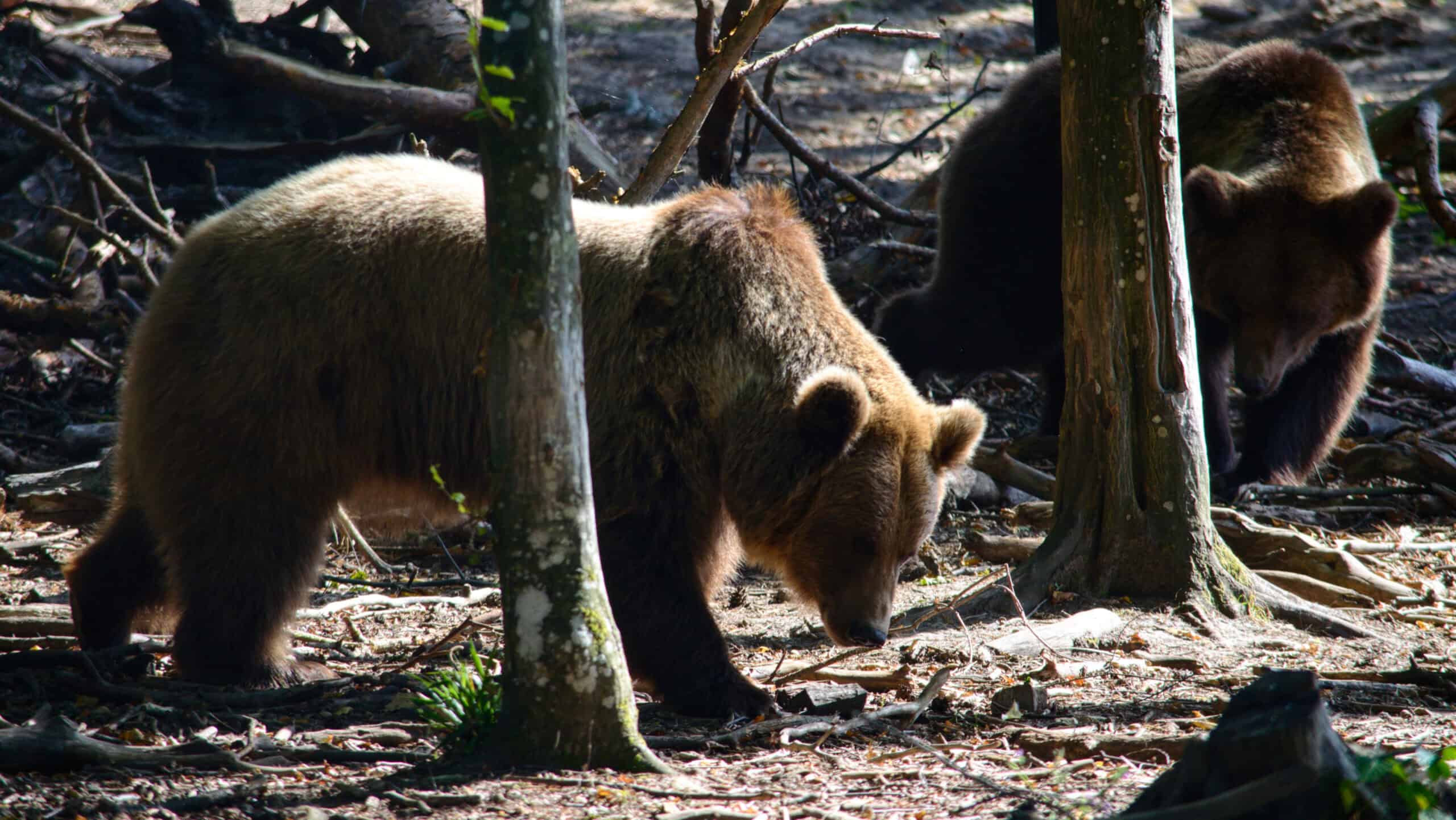
The Brown Bear (Ursus arctos) is one of the most widely distributed bear species, found across North America, Europe, and Asia. Despite its extensive range, the brown bear’s population density varies significantly from one region to another, influenced by human activity, habitat availability, and local conservation efforts. In North America, particularly in Alaska, brown bear populations are robust, with tens of thousands of individuals. However, in parts of Europe and Asia, such as Spain and parts of the Middle East, they are considered endangered due to habitat destruction and human encroachment. Globally, the species is classified as Least Concern by the IUCN, but certain subspecies face critical threats and are on the brink of extinction, highlighting the need for continued conservation efforts to manage and protect brown bear populations effectively.
This article originally appeared on Rarest.org
More from Rarest.org
15 Rarest Metals in the World

In the realm of materials science and industry, certain metals stand out for their rarity, unique properties, and crucial roles in various technological advancements. Read More
1960 Lincoln Penny Value Guide

The 1960 penny is a 1-cent coin produced by the US Mint in 1960. As a 60-plus-year-old coin, the 1960 penny is quite popular among collectors. Read More
10 Rarest Crystals in the World
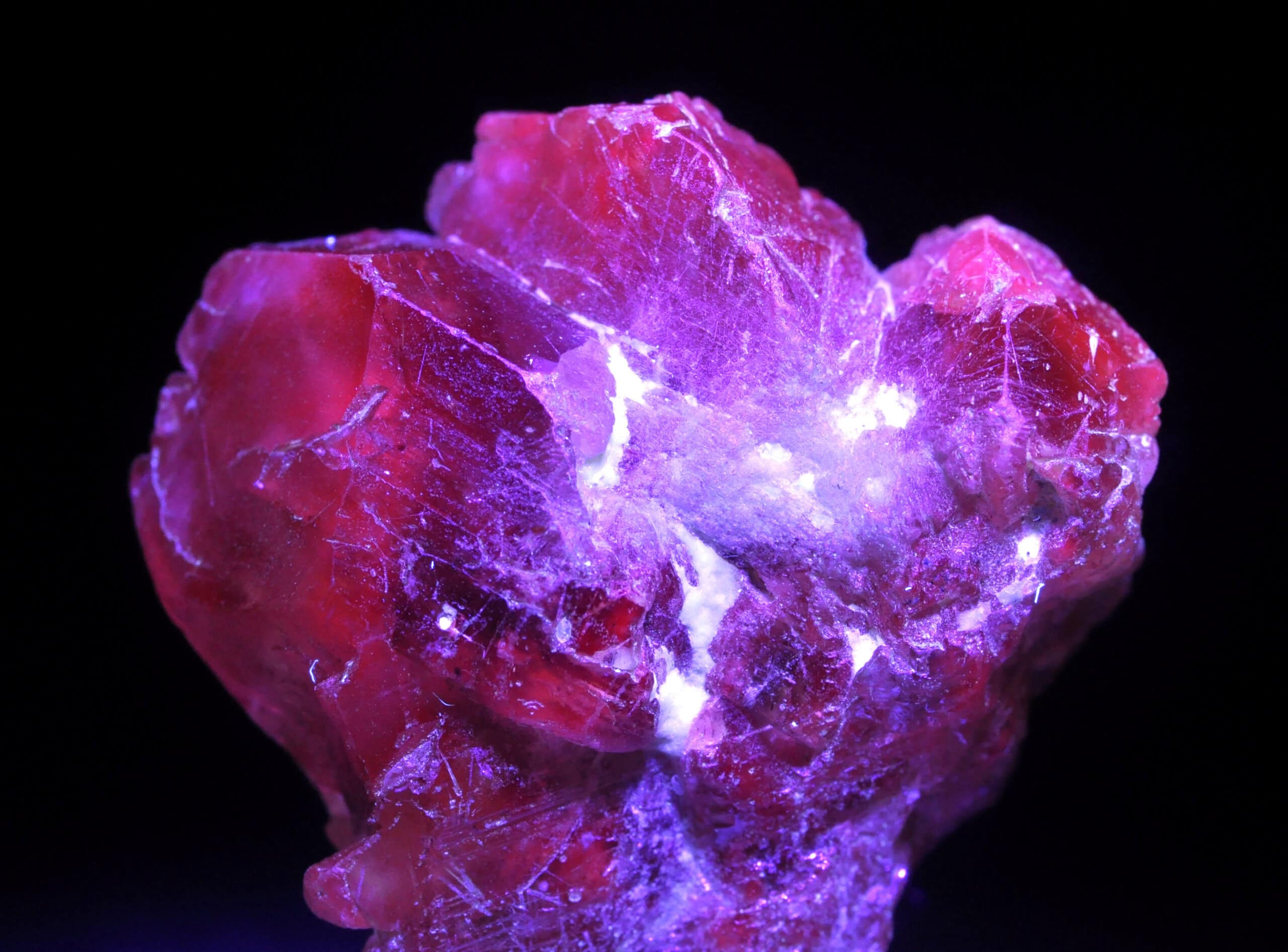
Crystals are some of the most widely collected items in the world because of their beauty. In recent years, crystal collecting has also increased in popularity because of the rise of alternative medicine. Read More
